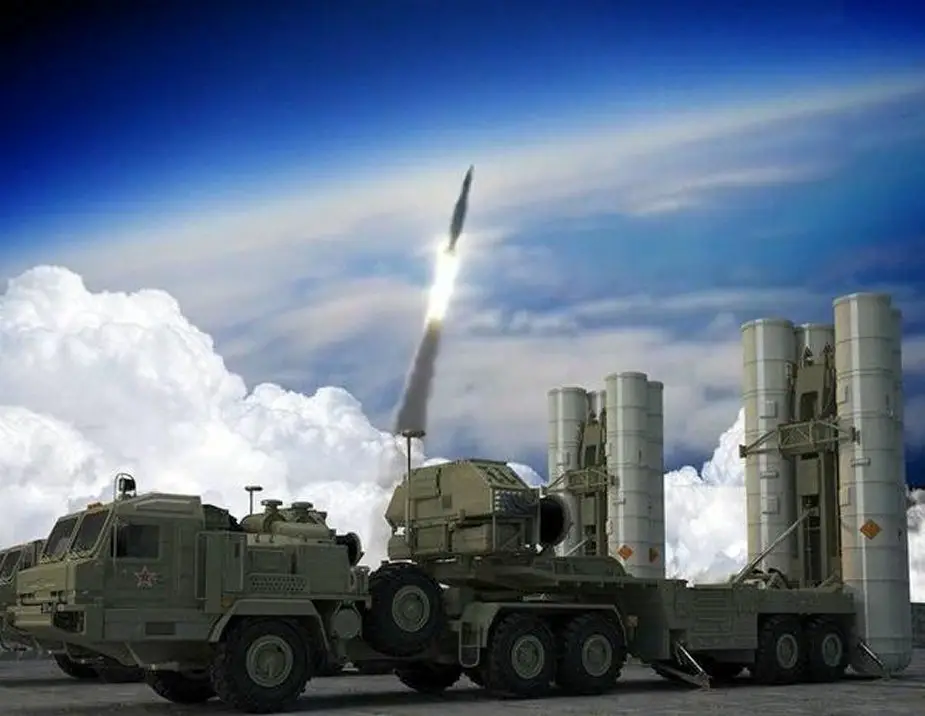Breaking news
Russia: no need to test S-500 in Syria.
Media reports claimed important elements of the latest Russian S-500 air defense system were tested in Syria. The Russian Defense Ministry denied the claims and said there was no need to test the weapon in Syria. Sources of Gazeta.ru online publication also denied the report which claimed the trials exposed specific problems that were rapidly rectified. The very claim means there were no tests.

Illustration for S-500 (Picture source: ZeroHedge)
Prospective arms and hardware undergo factory and acceptance trials. An acceptance act is signed and a report to the leadership is made. An order of the defense minister follows and the weapon is accepted into service. Such is the order. The media report shows its author has never been engaged in trials and acceptance of hardware.
Had S-500 been truly delivered to Syria, the US intelligence would have immediately exposed the fact. Dozens of heavy An-124 airlifters would be necessary to deliver a full S-500 set. It is so far unclear whether S-500 with 76T6 and 77T6 active phased antenna radar, 77P6 launchers and 77N6-N and 77N6-N1 antimissiles can fit into the cargo compartment of An-124.
The deployment of the weapon would not remain unnoticed either. It is necessary to find a safe ground of the required size for it. There are major problems with it in Syria and there is no free space within Russian Humaymim and Tartus bases.
Upon deployment, electronic means of the weapon have to go on air and would be immediately detected by US electronic intelligence. It cannot remain unnoticed anyway.
Trials also envisage live fire. Western intelligence would immediately detect missile launches and an information war would begin. So far, even the deployed S-400 in Syria has never fired, as it has not been necessary.
S-500 destruction range is 600 km. The safety zone for live fire to the maximum range should be at least 1,500 km. It means Ankara, Athens, Cairo and Teheran have to be warned that missile debris may fall on their territories.
Russia does not have a range to fully meet safety requirements. The only Soviet range which corresponded to the requirements is located in Sary-Shagan. It is now Kazakhstan.
Besides, it is necessary to deploy the launchers of ballistic and aerodynamic target missiles. To test maximum distance fire, they have to be deployed several thousand kilometers away from S-500 launchers. In Soviet times, missile defense was deployed at Sary-Shagan and ballistic targets were launched from Kapustin Yar range located over two thousand kilometers away. In the Mediterranean region, the ballistic targets should be launched from somewhere near Rome. It is unclear how such conditions can be observed in Syria where the authorities do not control the whole territory.
A range is no desert where test launches can be made in all possible directions. A range is a measuring site with a whole network of measuring points. Any launch or test is senseless without them.
Any trial of an air defense weapon has to be conducted in a corresponding air and jamming situation calculated for the distant future and weapons which the adversary may have in the foreseeable future. It means the latest available Russian arms and hardware have to be engaged. You cannot do it in Syria. There are no convincing reasons to bring even one radar to the country.
It is good to test any prospective weapon in a combat situation. However, there is no air or jamming situation in Syria which corresponds to the declared tactical and technical characteristics of S-500.
Terrorists in Idlib cannot launch spacecraft which have to be destroyed in the near-space at an altitude of 200-250 km. The adversary has no tactical and operational ballistic missiles and hypersonic craft. The terrorists have no manned aviation to say nothing of stealth aircraft. There are no conditions in Syria that can develop it into a test ground for S-500 in real combat.
It suffices to have available Pantsir, Tor and EW weapons deployed in Humaymim and Tartus to fight terrorist drones, Gazeta.ru said.
© Copyright 2019 TASS / Army Recognition Group SPRL. All rights reserved. This material may not be published, broadcast, rewritten or redistributed.


























